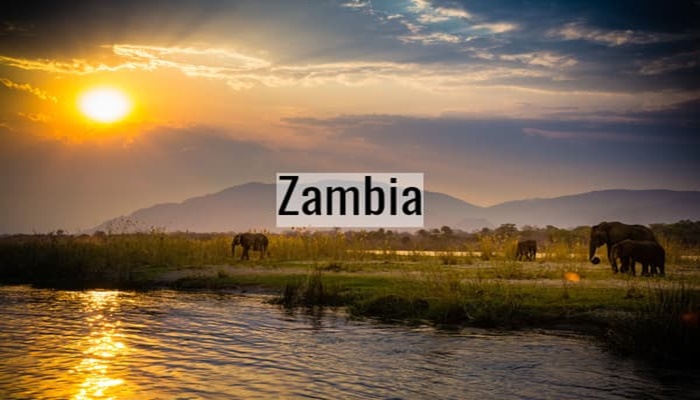Power outages are a thing of the past in Zambia
- Supply could even become surplus soon
The African Development Bank Group has celebrated the success of Zambia in eliminating frequent power outages, which used to be a regular feature of the southern African country.
Using its verified Twitter account @AfDB_Group, the bank tweeted on Saturday: “Power cuts are now a thing of the past in #Zambia! A major boost in electricity production – thanks to a robust hydraulic and solar power generation industry – means the country is now self-sufficient in energy.”
Power cuts are now a thing of the past in #Zambiað A major boost in electricity production – thanks to a robust hydraulic and solar power generation industry – means the country is now self-sufficient in energy.
— African Development Bank Group (@AfDB_Group) April 20, 2019
The bank shared a previous piece breaking down how Zambia overcame its constant power cuts, largely due to a robust hydraulic and solar power generation industry in recent years.
“And, there is even better news for citizens of the South African nation — electricity production could soon be in surplus,” the bank said.
Zambia generates practically all its energy production from its own primary resources: biomass, coal and hydroelectricity, with flagship plants such as the power station near the Itezhi-Tezhi Dam, in the south-east of the country, taking centre stage.
The $375 million Itezhi-Tezhi hydroelectric generating station became operational in 2016. The plant has a 120-megawatt capacity and is the fruit of the first public-private partnership project in the Zambian energy sector. Its primary objective has been to produce enough power to end the crippling daily blackouts and meet consumer needs of the country’s 17 million inhabitants.
Itezhi-Tezhi power plant has already increased the country’s power generation capacity by 7.5% and supplied an extra 50,000 people with electricity. In the first quarter of 2018, and for the first time in its history, Zambia stopped importing electricity from neighbouring countries such as Mozambique.
As far back as September 2017, national operator Zesco’s head of power transmission, Webster Musonda, told Ecofin agency: “Zambia’s power generation capacity has improved and will now be able to largely meet its energy needs. Overall, we will be able to meet demand and routine energy imports will cease […] but we will continue to import energy to meet occasional peaks in demand.”
According to the piece, the next step for the Government of Zambia includes plans for an energy surplus over the next two years. To meet this goal, it is exploring renewable energy, such as solar power.
The country’s new hydropower stations at the Musonda, Lusawaki and Kafue Gorge dams are important developments and in September 2018 the government inaugurated a 50 MW power plant at a cost of $60 million. An even more ambitious programme is under way, involving the construction of mini solar plants with an eventual overall capacity of 600 MW at an estimated cost of $1.2 billion.
The AfDB, which is championing its High 5 development priorities, such as the ‘Light up and power Africa’ Initiative under which this project falls, contributed $55 million to the Itezhi-Tezhi plant. Additional funding has been provided by international donors including the Netherlands Development Finance Company, the Development Bank of South Africa and Proparco France.
The bank’s portfolio in Zambia currently includes 23 ongoing projects, amounting to an investment of one billion dollars, in three main sectors: transport, water and sanitation and agriculture.
A strong partnership with Zimbabwe has also been the key to Zambia’s success, the two southern African neighbours working on a major energy project on the Zambezi River, which marks their common border. The 2750 km long river is the fourth-largest on the continent.
The project, which has a projected output of at least 2400 MW, is to be built upstream of the Kariba dam, close to the famous Victoria Falls, at a cost of $3 billion.
Electricity output will be shared equally between Zambia and Zimbabwe, with excess production sold on to other member countries of the Southern African Development Community (SACD), according to the project’s initiators.
Zambia’s electricity progress will be a subject of jealousy back in Nigeria, the self-styled Giant of Africa, where decades of electricity outages has still not been resolved despite the supposed investment of billions of dollars.
Only in the buildup to the February 23 presidential election, President Muhammadu Buhari said the opposition Peoples Democratic Party (PDP) has questions to answer on the “irresponsible expenditure” of $16billion on power when the party was in government for 16 years without a corresponding increase in power supply.
Buhari also reiterated his resolve to probe the $16billion spending, saying at a presidential campaign rally in Yenagoa, the Bayelsa State capital, in March: “The previous government mentioned on their own that they spent $16billion on power, but you are better witnesses than myself; where is the power? Where is the money? We will follow them; eventually, God willing, we will catch them and get our money back.”
Credit: Sahara Reporters




